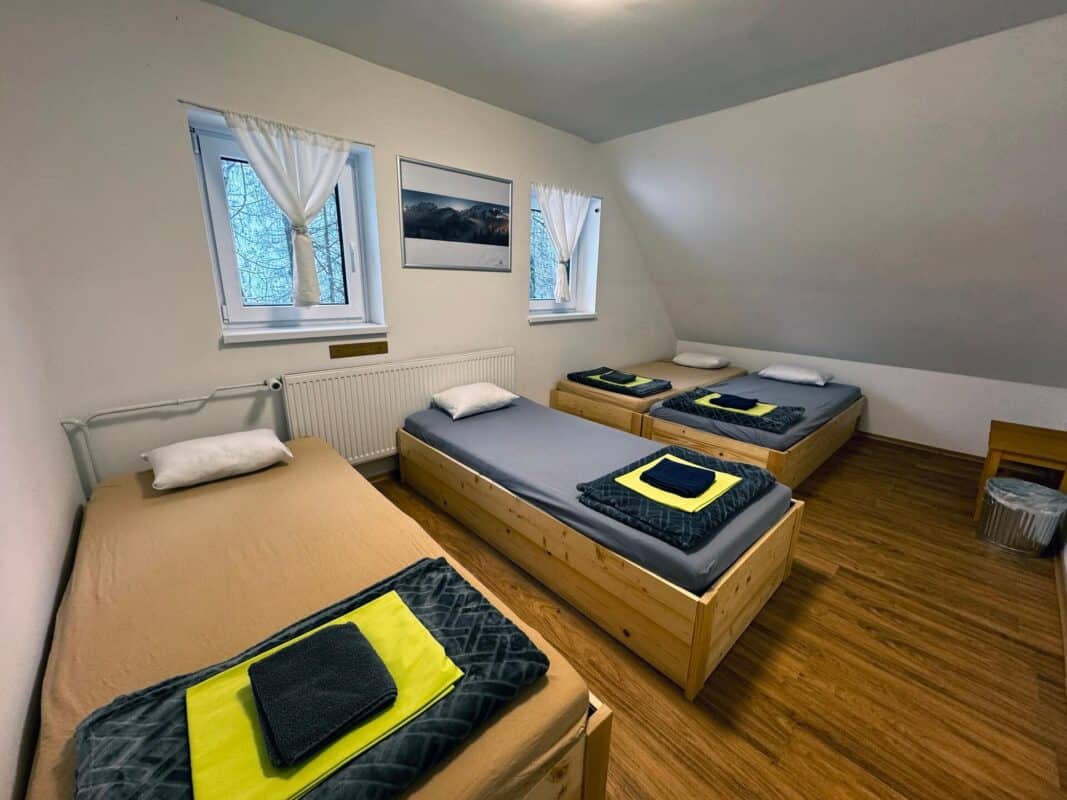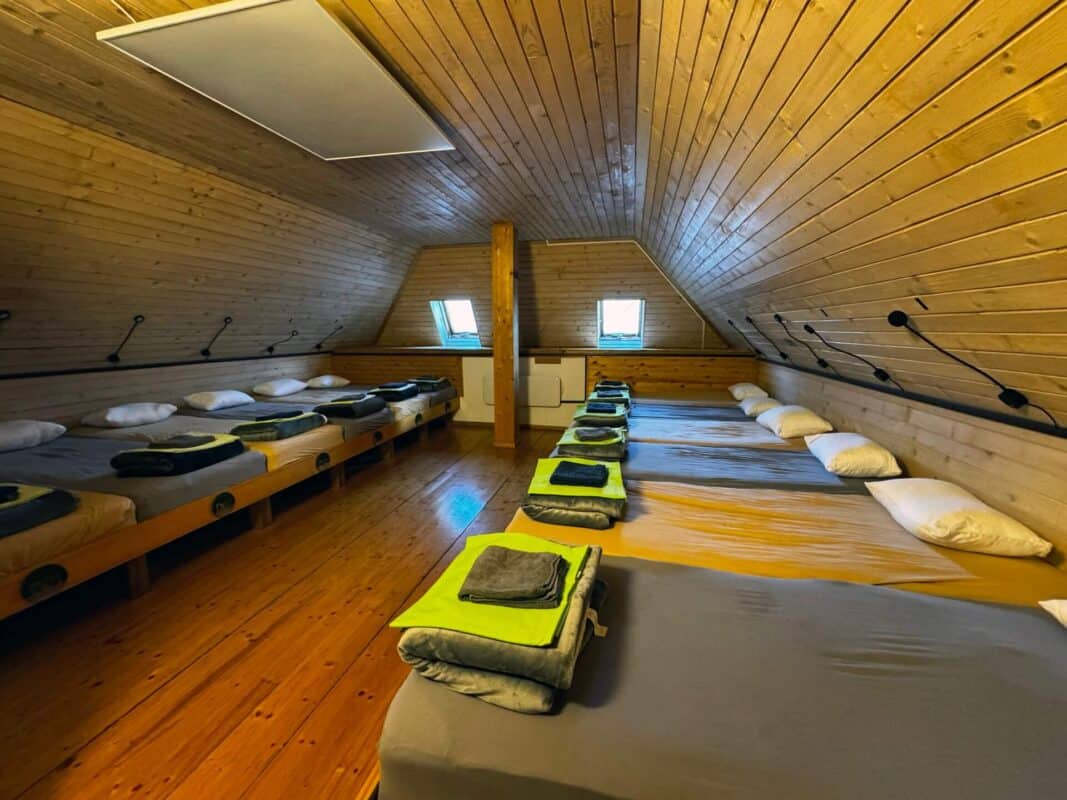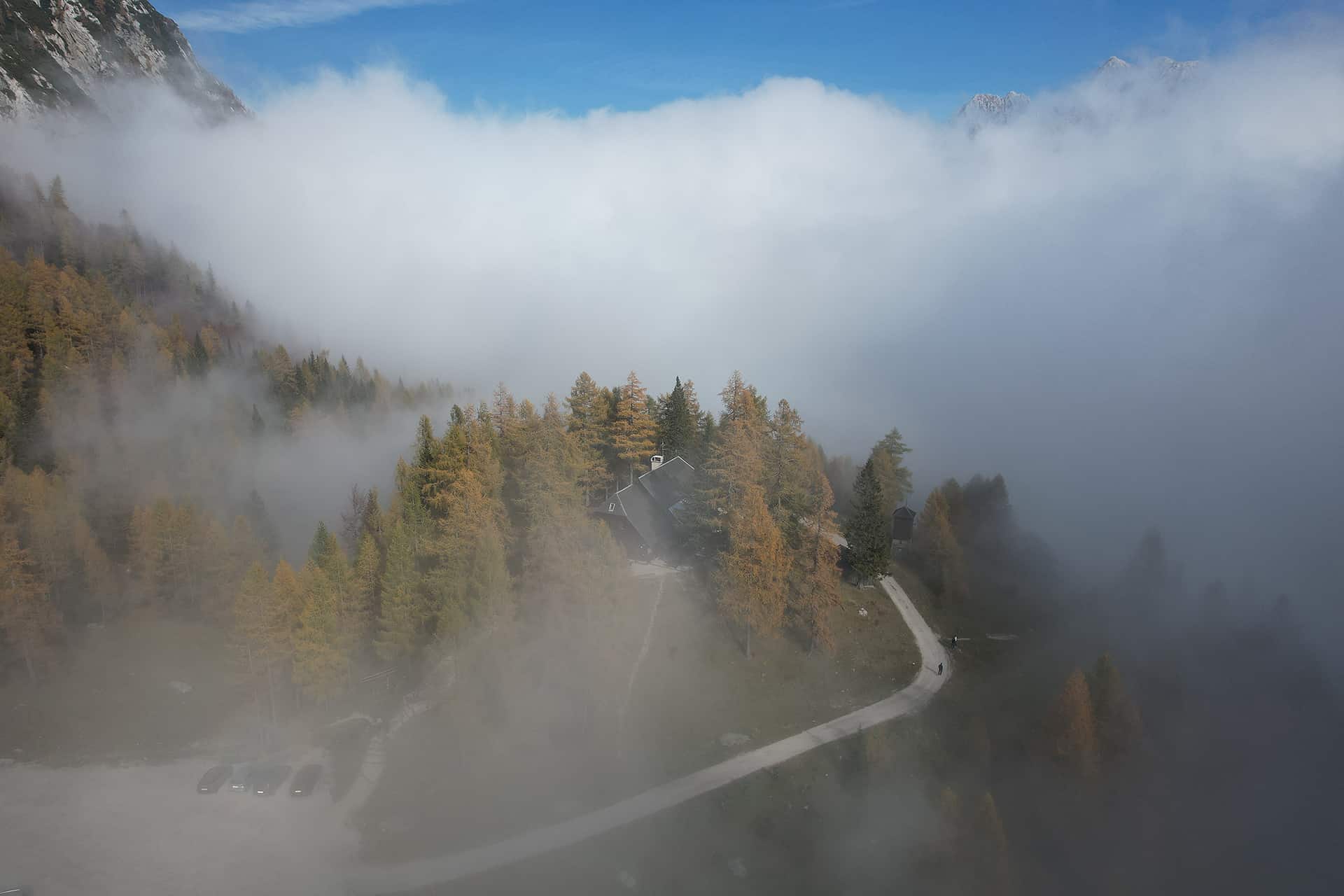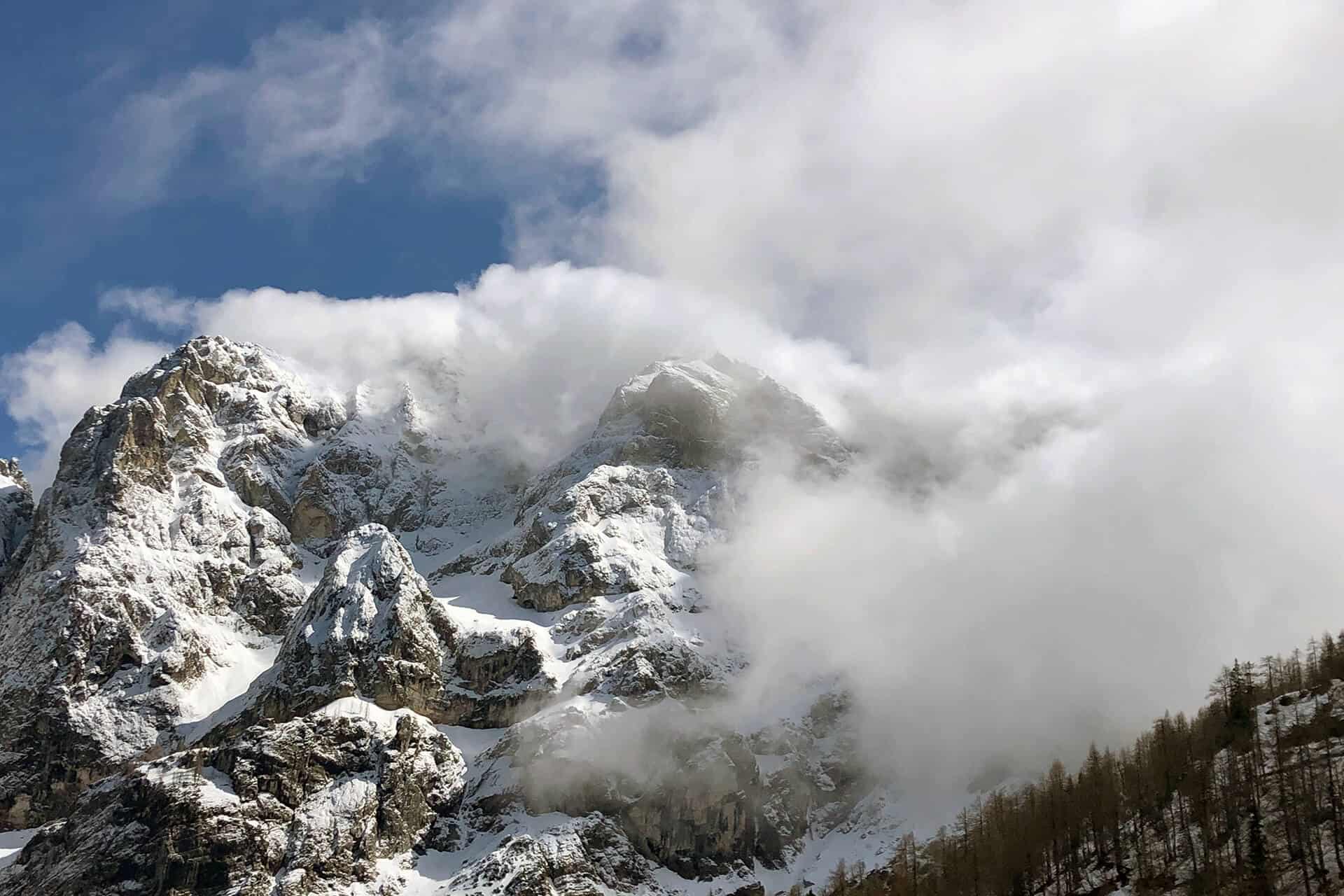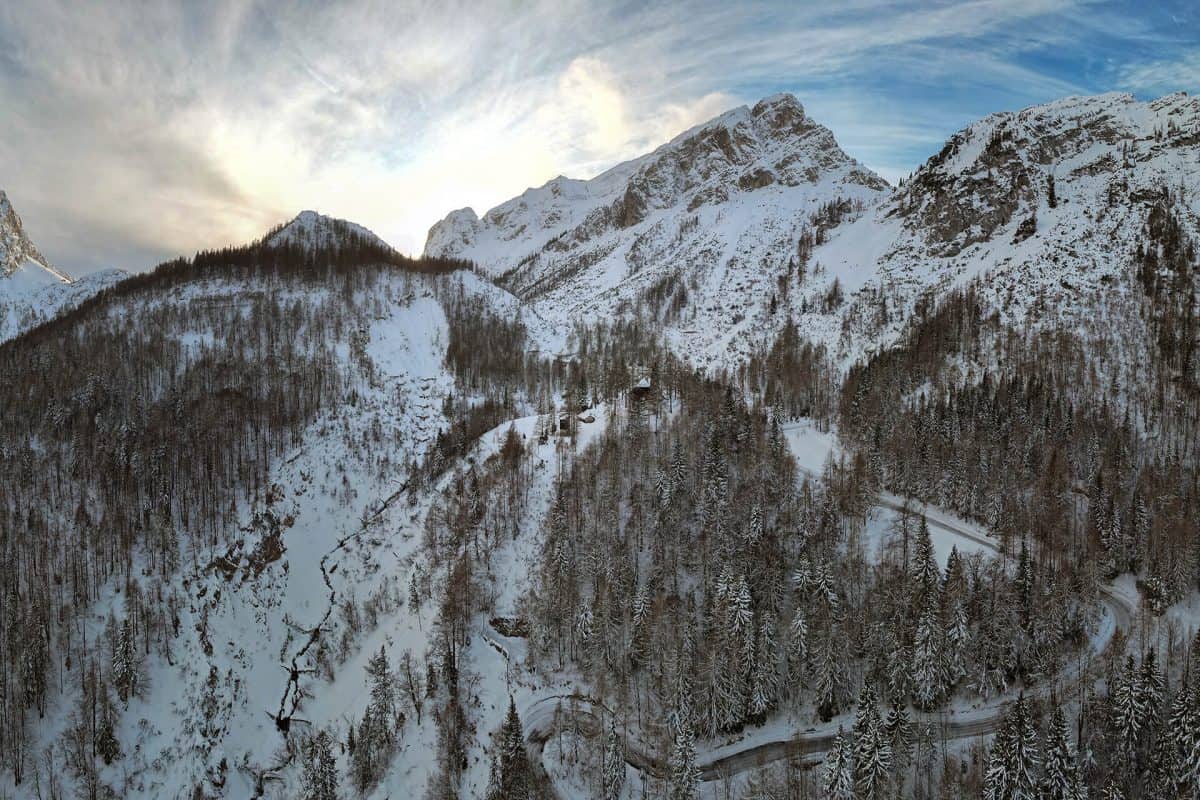Back in time, Erjavec lodge at Vršič mountain pass, Slovenia
How the road to Vršič was built
This post is also available in:
![]()
![]()
![]()
The diary of Franc Uran, who lived on Vršič from 1909 to 1916, takes us live into the times when and, above all, how the road to Vršič was built.
(Planinski vestnik, XIII / 1957, s.151-163)
There have been several writings about the road over Vršič, both in the old Yugoslavia and now after the liberation, but these descriptions were brief and incomplete because the authors of these lines were not familiar with the location well. I believe that it is necessary for the public to become well acquainted with the history of this road, which remains tremendously important even today.
Since I lived near the source of the Soča River for a full seven years. t. j. from 1909 to 1916 and was employed in the construction of this road from beginning to end, t. j. Until the arrival of that terrible avalanche on Vršič, which buried 110 Russians, I consider it almost my duty to describe this event, as I was present during this catastrophe.
In January 1909, I started working for Ivan Zakotnik, the master carpenter and mayor of Gornja Šiška at that time. Shortly after I started working, a trader from Kamnik named Franc Cvek came to Zakotnik and offered to sell him the Velika Planina forest in Trenta.

Zakotnik se je za nakup odločil in tako smo šli konec marca istega leta Zakotnik, Cvek in jaz v Kranjsko Goro, kjer smo se oglasili pri gostilničarju Pristavcu. Ta je bil lastnik gozda, kupil ga je pa od kranjskogorske občine. Takrat je bilo v Kranjski gori skoro en meter snega. Odločili smo se, da gremo v gozd prihodnji dan, za kar smo se morali temeljito pripraviti, ker so nas opozorili, da je na »vrhu« dosti snega. Zato.smo se opremili s krplji in smo prihodnji dan zgodaj odrinili iz Kranjske gore. Vodil nas je pa oče Mrak, občinski mož, ki je situacijo dobro poznal.
Do Klina je šlo še kar nekam v redu, ker je bila do tam pot izvožena. Od Klina dalje pa je bilo treba navezati krplje, ker smo gazili sneg na celem. Poti nismo videli nič. Kdor je poznal staro pot, ki je bila izredno strma, mi bo pač priznal, da je bila ta hoja s krplji na celem snegu izredno utrudljiva. Gazili smo sneg menjaje, da ni bil vedno eden in isti prvi. Pristavec je bil debel možakar in ga je najbolj zdelovalo.
Končno smo le prišli Na Močilo, od koder smo videli tudi takratno »Vosshiitte«, ki pa je bila zaprta. Treba je bilo torej iti dalje in smo končno le prispeli z veliko težavo na vrh do Jezerca, kot so takrat rekli Kranjskogorci ali pa na Kranjski vrh, kot so rekli Trentarji.
Gozd, ki smo si ga šli ogledat, se je pričel takoj pod vrhom na levi strani sedanje ceste in se je razprostiral spodaj ob Lemi, kjer je danes drevesnica proti Zadnjemu Prisojniku do Razorskih Korit in proti vrhu Prisojnika, dokler so pač rasle smreke in macesen. Gozda dosti nismo mogli videti, ker je bila pot v gozd nemogoča in tudi mi smo bili že pošteno utrujeni, zato smo si ogledali le del gozda Na Lemeh; potem pa smo šli dalje v dolino. Mimogrede smo si ogledali tudi izvir Soče, ki pa je bil s plazom zasut in smo do izvira morali iti s svečo pod snegom. Potem smo pot nadaljevali do Loga v Trenti, kjer smo se ustavili pri Čotu (Zorž) poleg Baumbachute.
Zame je bila to silno utrudljiva pot, ker takrat nisem bil še prav nič vajen planin. Spali smo pri Čotu, prihodnji dan pa smo nadaljevali pot peš do Bovca, ker ni bilo nobenega prevoznega sredstva. Iz Bovca smo se odpeljali s poštnim vozom do Sv. Lucije, kjer smo zopet prenočili. Naslednji dan smo se z vlakom odpeljali proti Jesenicam. Med potjo pa je barantija napredovala tako, da smo v Boh. Beli izstopili in šli tam v prvo gostilno, kjer se je kupčija zaključila. Popoldan istega dne pa smo se odpeljali v Ljubljano.
Gozd je bil torej kupljen in jaz sem bil določen, da bom delo v gozdu nadzoroval. Poiskali smo sekače in tesače. Čim smo zvedeli, da je izginil sneg, smo se odpravili v gozd in to maja meseca istega leta.
Z njimi sem odšel tudi jaz. Ker je bila takrat Vosshiitte že odprta, sem se provizorično nastanil tam. Medtem pa so sekači podrli nekaj smrek in si iz smrekovega lubja napravili zasilno strehov Tu moram omeniti tudi takratno pot iz Kranjske gore čez Vršič, ker je pozimi zaradi snega nismo mogli videti.
Do Klina je bila slabo oskrbovana gozdna pot, tam je bila zasilna brv čez Pišenco. Od Klina dalje pa je bila pravzaprav le steza, ki se je v nekaterih krajih zelo strmo dvigala. Pri Žlebiču (pod sedanjim Mihovim domom), je bil studenec, kjer se je običajno počivalo. Od Žlebiča dalje je bila steza na več krajih razrita od hudournikov, malo pod Močilom pa je bila zasuta od peska in kamenja od plaza. Tudi od Močila dalje proti vrhu je bila pot zasuta od plazov. Pešec je prišel lahko do vrha, z vozom pa je bilo nemogoče. Zato so morali takrat hrano in pijačo v Vosshiitte nositi na hrbtih.
Druga stran proti Trenti pa je bila še slabša. Na kranjski strani je še ta ali oni gozdni posestnik kak les »vlačil« proti Klinu, s čimer je bila pot do Klina kolikor toliko utrta. Na trentarski strani je pa bila pot prepuščena sama sebi in torej silno zanemarjena, uporabna samo za pešce. Bila je to prava kozja steza, ki se je vila po obronkih sedanje ceste do Hude ravne, mimo Komacovega spomenika naprej do Lemi, kjer je sedanja drevesnica. Od tu dalje je ta steza še popolnoma taka, kot je bila pred 45 leti. Tak je bil takrat prehod iz Kranjske gore v Trento, samo za pešca, nikakor pa ne za kako vozilo.
Trentarji so pravili, da je pred nekaj leti, preden sem jaz prišel v Trento, avstrijska vojska imela tam vaje in da so takrat pripeljali čez Vršič tudi nekaj manjših topov, ki so jih privlekli tudi do Trente, vendar z veliko težavo in da jih je več zdrknilo tudi pod cesto. Takrat si nikdo ni mogel misliti, da je avtomobilska cesta čez Vršič sploh izvedljiva.
Treba je bilo torej skrbeti najprej, da se napravi primerna cesta, da se bo mogel dovažati v gozd proviant in orodje, ki je potrebno v gozdu, istočasno pa odvažati nazaj posekan in obdelan les. Moja naloga je bila, da za vse to skrbim. Najel sem delavce v Kranjski gori in v Trenti. Z delom smo pričeli v Kranjski gori in predvsem očistili in popravili ter razširili cesto od Kranjske gore do Klina, da je bila uporabna za vozila poleti. V Klinu je bila takrat le brv čez Pišenco, zato smo morali napraviti nov most. Iz Klina dalje proti vrhu pa sem se moral držati stare gozdne poti, ker bi kako novo smer takratni posestniki skozi svoje gozdove ne dovolili. Trasiranje nove ceste pa bi bilo tudi predrago. Ta pot je bila v nekaterih krajih izredno strma, večkrat pretrgana od hudournikov in plazov. Mostički čez hudournike so bili razdrti.
Vse te ovire smo za silo odpravili, pot po možnosti razširili, napravili nove mostičke čez hudournike in v splošnem usposobili pot za voznike, in sicer vse do vrha prelaza. Seveda takrat še nikdo ni računal s tem, da bo prišla jesen in zima in z njima hudourniki in plazovi. Kljub temu pa je bila pot v dobrih dveh mesecih sposobna za vožnjo z vozili. Ves ta čas sem stanoval v Vossovi koči, ker naša naselbina ni bila še gotova.
Medtem pa smo si poiskali prostor, kjer naj bi bila centrala našega podjetja in kjer naj bi se postavila tudi potrebna poslopja za bivanje osebja in delavcev, hlevi itd. Zaradi nevarnosti plazov je bilo treba vprašati domačine za nasvet in so nam Trentarji nasvetovali, da se naj to napravi v malem kotlu pod Hudo Ravno, kjer je tudi studenec dobre zdrave vode, ki ga pa danes ni več. Tu smo najprej napravili hišo iz celih debel (Blockhaus), pokrito s smrekovim lubjem; prav tu je bilo tudi zasilno stanovanje za Zakotnika in mene in tudi pisarna. Drugi del hiše pa je bil za delavce sekače in tesače. Istočasno pa smo na bližnjem gričku pričeli graditi lepo planinsko kočo s štirimi sobami, kuhinjo, kletjo in podstrešjem, ki je imela tudi železne peči in štedilnik. Tako sem se konec junija preselil iz Vossove v našo kočo.
Prvo leto, t. j. 1909, smo sekali le na levem pobočju sedanje ceste proti Prisojniku, medtem pa nadelovali cesto do vrha, ki je bila v silno slabem stanju. Z vožnjo pa smo čakali do zime, ko se les lahko vlači po snegu. Ker pa na tem pobočju ni bilo veliko lesa, temveč je bil glavni del gozda na južni strani Prisojnika, je bilo torej treba skrbeti za cesto v ta del gozda. Edina steza v Zadnji Prisojnik je bila tista, ki je držala do Prisojnikovega okna in na Prisojnik, ki pa se je nekoliko pod oknom odcepila na desno v Zadnji Prisojnik ter steza čez Robec. Obedve stezi pa nista bili primerni, da bi se uporabili za izvoz lesa iz Zadnjega Prisojnika. Zato sem trasiral cesto od naše naselbine čez Šupco in potem dalje proti Zadnjemu Prisojniku ravnice »Na Ležah«. Na Ležah je bila ravnina, kjer smo postavili drugo naselbino. Izdelava ceste od naše naselbine pod Hudo Ravno do Šupce in naprej Na Leže je bila silno težavna in nevarna, ker so pred Šupco hude strmine in svet brez trdnega fundamenta. Istotako tudi onstran Šupce. Pod Šupco pa bi bilo nemogoče izpeljati cesto, ker bi tu morala biti vsekana v živo skalo, to pa bi bilo predrago. Dalj kot do Lež mi nismo delali ceste, ker nas je prehitela vojska.
S sekanjem gozda smo tako nadaljevali do leta 1914, ko se je pričela vojska. Poleti smo sekali in tesali les, pozimi pa smo ga vozili na postajo v Kranjsko goro. Sekače smo imeli običajno iz Bače pri Podbrdu, tesači pa so bili iz Loške doline, deloma pa tudi Trentarji. Ves čas, dokler se ni pričela vojska, nismo pri našem obratu imeli nobene nesreče.
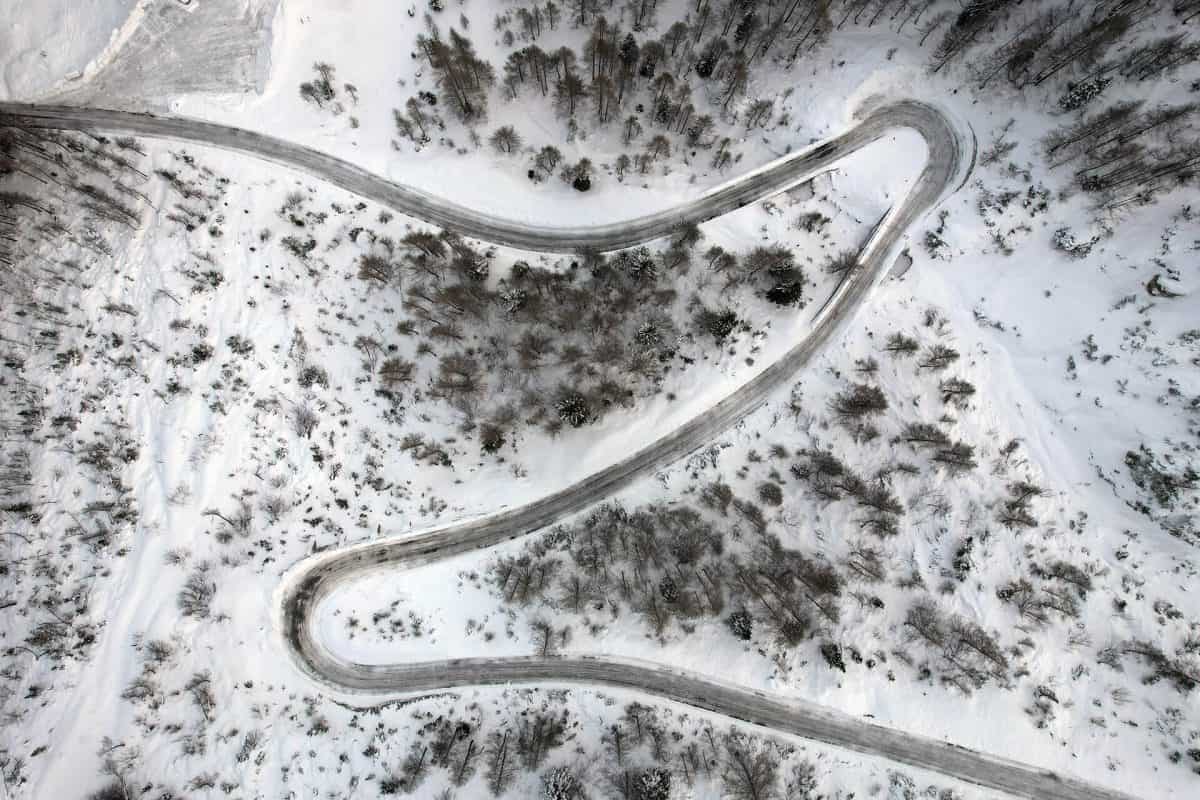
We also got used to winter conditions and took precautions in time to protect ourselves from avalanches.
The avalanche below Močilo, the one from Slemen that usually went towards Vršič Pass, and the avalanche below Mojstrovka were particularly dangerous. During winter, we used to plant long poles in the snow from Močilo to the summit so that the drivers could orient themselves when they arrived late in the evening from Kranjska Gora. As soon as it seemed that avalanches might occur, we would stop all traffic over the pass. Once the avalanches had cleared, we would create a path over them for sleds and continue with the transportation. We were never overtaken by any accidents.
I spent all my free time climbing all the peaks around there: Mojstrovka, Prisojnik, Razor, Jalovec, and so on. I often visited Zlatorog on Log, where I would meet with the innkeeper and the then-mayor Cundro, p. d. Tondrom was a very good friend. Today he lives in Maribor, where he had to move after his estate in Log was sold. I used to hike alone most of the time, but occasionally I would take along a worker who enjoyed the mountains.
In my cabin, I often had various visitors. During that time, it was very rare to find a Slovenian who would come across Vršič to Trenta. There were often Czech visitors, among them two, one of whom was supposedly named Dvorsky, who would come to the Julian Alps every year. There were many German visitors, especially from Carinthia, and also some from the Reich, mostly Bavarians. Many of them stopped at our settlement, rested, and asked for information. Even Dr. Kugy and Bois de Chesne stopped by us on several occasions.
Many came to us for official purposes, including foresters from Bovec and Tolmin who indicated the wood for us. With them always came Andrej Komac (Mota), the son of guide Andrej Komac, who has a monument on Huda Ravna, where he froze to death a year before our arrival. I became friends with Andrej Komac and visited him several times at his home in Log. During the First World War, he disappeared without a trace. “Špik” – Tožbar from Sv. Marija also came several times, whom I visited at his home a few years ago. He did not recognize me anymore as he had lost his memory in old age. Among Slovenian tourists, I remember only Dr. Bogdan Žužek, who was once with his mother in our cottage.
In 1910 Prof. Ludwig, then President of the D.U.O.A.V., came to Zakotnik and agreed to extend the then Vosshiitta. I was commissioned to draw up a plan and a budget, and indeed the opening of the enlarged Voss hut took place in 1911. The eastern wing of the current Erjavec hut, where the bedrooms are, is as I designed it at the time and has not been altered.
Among the workers, many of whom were Trentarians, there were also a number of poachers. Since I started, I have had no way of knowing who is fishing. We knew he had a hidden gun somewhere near the settlement. As dawn broke, a wild goat fell somewhere in Prisojnik. Finally, we found out that it was Škafar and Vertelj Anton, who were each hunting for themselves. As we sat around the fire in the bailey, they told us various adventures about these poachers: how Škafar carried a chamois through Pi-isojnik’s window to escape the hunters, how the poachers tied the game warden Košir from Kranjska gora above the anthill with his head above the anthill, and how he was accidentally saved by a shepherd so that the ants didn’t devour him. Škafar was said to have fished for trout in the Soca. The hunter watched it with binoculars from the top of the hill. Škafar went home with his prey, and the hunter made a trail in the sand and went to Škafar’s home to prove the theft of the trout. The proof failed, however, because the footprint in the sand did not match the shoes, because Škafar had a pair of huge shoes that were not suitable for his feet.
Our settlement consisted of an administrative house on a hill, a building for workers, a kitchen, a smithy, a charcoal store and two stables. We had 6 to 8 horses, sometimes more. Šmon, a saddler from Črnuče, repaired the horse equipment. Once he asked me to go with him to Mojstrovka and to collect some mountain pine trees to take home. I led him from the top over the scree behind Sito, so that we could then go along the ridge to Mojstrovka and collect the mountain lilies there. My husband was very excited to get so high. But when we came out from behind Sito on the ridge, where there is a very nice view of the upper Trenta, Grintovec, Jalovec, etc., his head spun, he covered himself with his cape, sat down on the ground, and I couldn’t get him out of his seat any more. I took him by the hand and led him back to the scree, where he was relieved. I went to collect the mountain lilies for him. Apparently my husband still lives in Črnuče.
The winter of 1912 was extremely severe. A lot of snow fell and we stopped all work over the winter, including sending the horses to Kranjska Gora. Before Easter, I came to our settlement to sort out a few things. I was alone. Meanwhile, it has started to snow and it is a terribly cold night and day, without a break.
I tried to snowshoe my way to get over the summit and into Kranjska Gora, but with the greatest effort I barely made it to Huda Ravna. So I went back to the hut and gave in to fate. I had enough food to get by, but it was monotonous. Days passed and 14 days passed, and still no one from Trento was there to go to Kranjska Gora. That day Šilov Lojz brought me some milk and eggs, because in Trento they knew that I was alone in the hut. I was very happy to see it. I still didn’t dare to go over the top because the snow was soft. So I was left alone for three whole weeks. After three weeks, the first Trentars arrived, paving the way over the summit, and we arrived together in Kranjska Gora. At home, they were convinced I was snowed in. Nobody could reach me from Kranjska Gora either. This was the time when the “Titanic” sank and Dr Cerk was killed a short time later on the Stool.
As spring began, avalanches began to rule. From all sides, from Prisojnik, Mojstrovka and Travnik, they made their way into the valley. Then there was thunder and roaring, especially at night, so that it was impossible to sleep. Huge masses of snow used to pour down into the valley. A particularly large avalanche came every year from Travnik and rolled into the ravine below our settlement. It never reached our settlement.
The most dangerous avalanche for our settlement was the one from Prisojnik. That’s why we didn’t dare to cut any wood above our settlement, because every year it was the forest that held back this avalanche. The forest was under the protection of the forestry administration and we were only allowed to clear certain areas, and not densely.
Our hut was built with a very strong ceiling over the cellar, so that we could hide there in case of danger. This cellar still exists today, but the hut was washed away by an avalanche in 1917.
In those days, it was a real pleasure to walk from Močil over the summit and on towards Trenta. In spring, all these slopes were a single rose bush. On the Goriška side towards Huda Ravna, there were mountain flowers of all kinds.
I have always felt very comfortable among the Trentarians. I loved them. They were good, soft-spoken people who were a pleasure to talk to and listen to. Trentar was used to suffering and was content with little. For a year and a day, he ate only polenta and sometimes “chompas”. He did not know bread.
Only if he went to Kranjska Gora did he buy it. He drank Trentar “gajst”, i.e. j. He bought some plain spirit, which he diluted with water at the first well. Every Trentar carried a bottle of this when he left home and offered a sip to everyone he met. At that time, the Trentans went shopping in Bialystok.
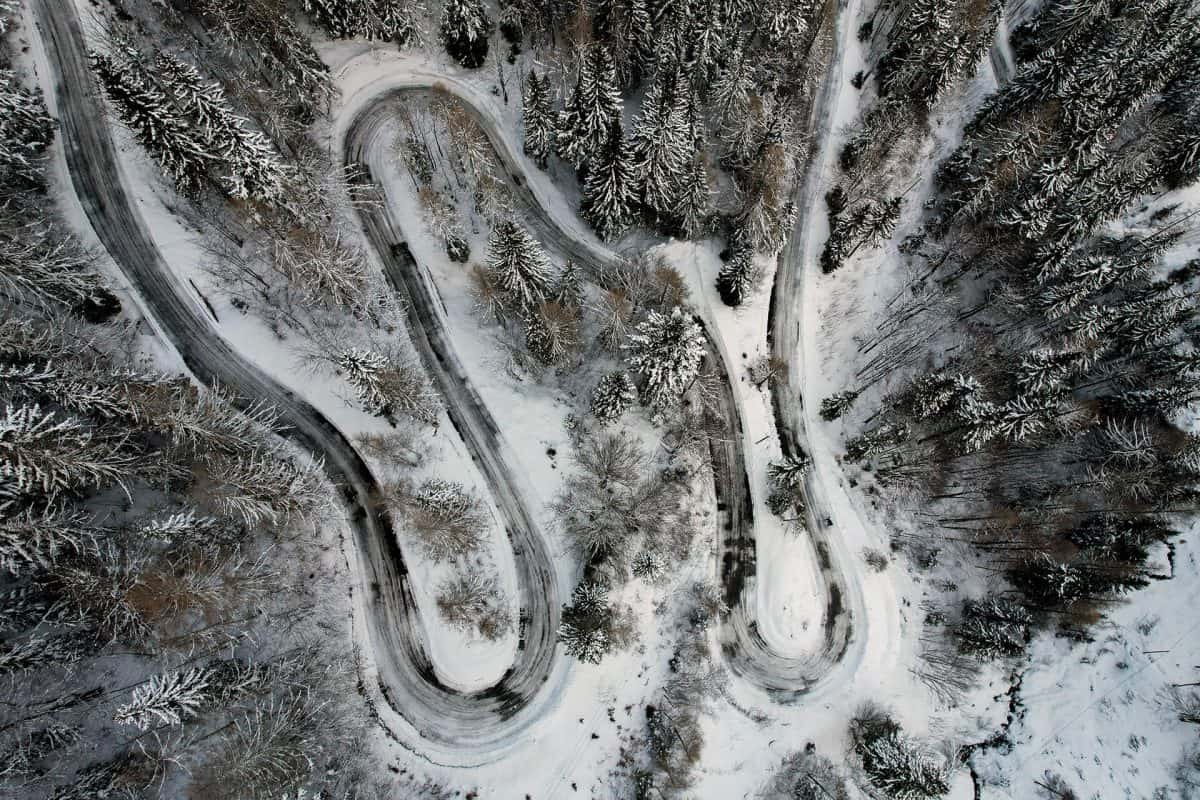
They also drove their small livestock to the seminary in Bialystok. They usually went there to see a doctor. So he walked the whole way, first over Vršič and then over Podkorensko sedlo.
If Trentar went to Kranjska Gora, he said he was going over Kranjski vrh to Kranj = Kranjska Gora. But no one said it was going over Vršič. The Kranjska Gora people said they were going to “Jezerec” because at that time there was a small lake right on the pass, which never dried up. Our road withdrew, and then the military road broke it up. Voss’s hut was called both by the Trentars and by the Kranjskogorci the Hut on Močil. Officially, it was then called Vršič Prelaz Mojstrovka. During the war, the military commandos also called Vršič “Mojstrovka-Pass”.
But when the First World War broke out in July 1914, we had to temporarily stop all work because the workers had to leave for the war. In the autumn, we started work again, but on a very reduced scale. Despite the triumvirate, Austria had no confidence in Italy and slowly began to prepare for war against it. In the meantime, negotiations continued, but, as is well known, they failed. Thus, in the autumn of 1914, the High Command began preparations on this section as well.
One of the most important issues for trips to the mountains in that era was the question of good shoes. The first time we walked across Vršič in the winter in the snow, I was wearing ordinary walking shoes, which of course got soaked immediately and I suffered a lot on the way. Later, when I came into contact with hunters and foresters in Trento, I saw that they had excellent, strong, waterproof and brilliantly shod boots. Such shoes were worn by Črnigoj, a forester from Bovec, Andrej Komac-Mota, Tožbar-Špik and others. When I asked where such shoes, which are indispensable in Trento, are made, I was given the address of the shoemaker who makes and supplies them. This was Franz Plieseis, a shoemaker in the village of Goisern in Upper Austria.
I wrote to him immediately and got an immediate reply that he was ready to make my shoes and that I should send him the measurements as soon as possible. Such shoes cost 10 crowns at the time, with a box of excellent lard. I stayed in contact with this shoemaker until the First World War, and I was constantly ordering shoes from him for myself and my acquaintances. The shoes have always been excellent and everyone has been happy with them.
At that time, it was not possible to buy mountaineering shoes in Ljubljana or elsewhere. It was only after mountaineering became more developed and the shoes of the Goisern cobblers became better known in the mountaineering world, that similar shoes started to be made in our country and were called “gojzerji”. The first and true mountaineering shoes came from the village of Goisern. The shoemaker Franz Plieseis died at an old age about five or six years ago in Goisern. He is, in fact, the inventor of the so-called ‘Goisers’.
In autumn, the military commandos sent 25 Russians to Kranjska Gora. They were Siberians themselves, tall, dignified people, who were accommodated in the Pečar’s salon. They were guarded by Austrian soldiers. Every morning they went from Kranjska Gora, each carrying a bar of iron, which they then handed in at Močil. These iron bars were then used as wire barriers on Vršič. This was the daily work of these Russians. In the evening, they usually sang various Russian songs, and the locals loved to come and listen to them and bring them treats. Initially, the Austrian Guard did not defend this, but later any contact with the Russians was strictly forbidden and also dangerous, because anyone was immediately considered a traitor to the Fatherland.
This was only the beginning, as the state of war between Austria and Italy had not yet begun. That winter, there were no major war preparations on Vršič and in this section. As soon as the month of May was approaching in the spring of 1915 and it was certain that Italy would take the other side, the
Preparations for the road over Vršič to Trento. The women’s corps arrived with engineers and they started to measure and route the road to Trento. They brought a lot of building materials to Kranjska Gora, and more and more Russians came with them. Various barracks, warehouses, offices, etc. were built in Kranjska Gora. There was, in fact, a huge amount of traffic. The route to Trento was soon completed and divided into 12 or 13 sections. One engineer took over each section. The engineers were mostly Czech Germans and a few Hungarians. The commander at the time was still Major Rimi, also a Czech German, but not a bad man for the Russians. The first section from Kranjska Gora (from Baba) to Erika was assigned to Slovenian Eng. Beštru, who was not particularly popular with his German colleagues, among whom were also many Jews, because of his Slovenian origin.
But when on 24. Italy officially declared war on Austria in May 1915, work on the road across Vršič was already in full swing. At that time I was also called up for the war, but because of my position in the construction of this road I was temporarily exempted from military service.
The military administration occupied our settlement and our work in the forest was completely stopped. The tremendous overhead in the forest almost ruined him financially and he was on the verge of collapse, because he was only eating the forest and not giving enough of himself. But when he saw that the war administration had decided to build a road across Vršič, he had the good idea to cash in the wood from his forest. He went to Bialystok, where 6 was stationed. General Rohr, to whom he suggested that he would be prepared to make a so-called avalanche protection roof over Vršič from his own wood (Lawinenschutzdacher), thus ensuring safe passage for the Austrian army over Vršič, even in the winter when snow fell. The Military Administration approved Zakotnik’s proposal and the construction of these roofs over Vršič began.
The military route of the new road followed our road only as far as Erika, where it crossed Pišenco and then gently ascended with a few curves to Mihov’s home. There it crossed with our road, left it again and then only met again a few times until it reached Močil. This route took a completely different direction and came back to our road at Močil, followed it for a while, then took a turn and rejoined the old road at the top of the pass.
On the Goriška side, our road, except for two curves, goes continuously to Huda Ravna, t. j. to the Komac monument, which they wanted to demolish at the time, but I went to Ing. Schutt intervened to keep the monument. The route then follows our road back to our village and then on to Šupka and then on to Lez. From here on, the route is completely new, because from here on, there was no track at the time. It winds its way and over very rough terrain; it finally reaches the valley at the present bridge and from here on to Logo in Trenta. The tunnel did not exist then. This was later done by the Italians.
The new road was built exclusively by Russian prisoners of war, around 12 000 of them. They were accommodated in various barracks from Kranjska Gora to Trenta. These barracks were very primitive and very cold in winter. The food of the prisoners was very poor and insufficient. They were divided into squads of 25 men, guarded by one Austrian soldier and one Russian interpreter, usually a Jew, who did nothing. There were also many Germans from the Volga among the prisoners. The prisoners were poorly dressed. Because they had to work in good weather and bad, most of them had their uniforms torn. The Austrian military administration did not give them any other clothes. As a result, various diseases such as dysentery, dysentery, cholera and smallpox spread among them and many died.
The Russians were treated very badly. Some engineers and officers in particular behaved savagely towards prisoners. For the slightest offence, the prisoner was tied to a tree and fainted in no time. Then they splashed cold water in his face to make him conscious again and left him hanging like that for two to three hours. The wildest of the engineers was Ing. Kavalir, a Hungarian, who built the section under Močil. When he was drunk, he would come with a heavy stick into the street among the Russians and he would beat the Russians with the stick, no matter where it fell. Many Austrian guards also liked to beat up Russians. An appeal was impossible. When the guards brought the captured Italians along the new road, the Russians always attacked them with picks and shovels, saying that it was the Italians’ fault that the army was still going on, because the army would have been over a long time ago if Italy hadn’t helped.
To the Russians. They barely kept the Italians from being killed on the spot.
So, as soon as Zakotnik got the go-ahead from the military command to build the flood-proof roofs, he teamed up with Weissbacher, a master carpenter from Ljubljana, and the two of them immediately started preparations. In particular, they got us to move back into our settlement, which had been occupied by the military. Half of the rooms in our cottage have been returned to us, i.e. j. two rooms, and the soldiers kept the other half. At that time, loggers, carpenters and drivers were mobilised all over Slovenia and even in Tyrol and Solna Graz to work on the road over Vršič. These flood protection roofs were to be built from Močil over the top and then a little further on from Tičar’s house. The flood protection roofs were designed to be raised on 35 X 35 cm strong columns to which strong rafters would be attached and then embedded in the ground above the road. The rafters would be roofed by 6 cm thick slabs, over which the avalanche would then slide. But it was all connected by strong iron couplings. In theory, this was a good idea, but practice and the avalanche have shown otherwise.
The construction of the columns and rafters started immediately. At Leža, the prisoners of war were sawing the slabs by hand, with one prisoner on top and two prisoners holding and pulling the handsaw below. In this way, up to two wagons of slabs were sawed daily at Leža.
Work started at Močil. In the meantime, I got another bowmobile with a circular saw and we started sawing sheets with the circular saw at our hut. Meanwhile, the road was being worked on with all haste. The road was not solid because round spruce wood was used for various trusses, which could not hold for long. This became apparent later.
At the same time, a cable car was built to take people from Kranjska Gora to Vršič, where the station was located. The second station was in the ravine below our settlement, and the third was at the footbridge as soon as you get to the valley before the source of the Soča River. The cable car could pull up to 60 kg and mainly transported food for the army, hay for the horses and various tools. At Huda Ravna, the cableway went so low that the terrain had to be dug up. Here, various sacks of food were stolen several times by both Russians and Austrian soldiers. Guards also stole or were caught in the act. Most of the thefts took place when the so-called “Liebesgaben” were sent to the front. When the cable car was being built, I said that it was not the right way to go because it would be taken away by an avalanche, and they laughed at me, saying that it was not as dangerous as I thought it was. Many officers and engineers even laughed at the flood-proofing project.
The road works were progressing at a very fast pace, so that 1. In October 1905, the later Emperor Kari already drove a car along it. He drove to the Soča River in Trento, where there was a military reception. At the time, it was rumoured that he had contracted cognac at lunch and had fallen into the Soca River drunk. We had to hold the torch at Mochil.
The main construction team was based in Kranjska Gora. Then there were various intermediate commands, and Major Rimi built his villa above the Russian church. The second team was in Vosshutta and the third in Tičar’s home. In Huda Ravna, he built himself a magnificent one-storey villa, ing. Schutt. I advised him against the place where he started building because it was dangerous for a landslide, but he didn’t believe me. The villa was swept away by an avalanche that winter, but Schutt luckily still had his head. The foundation of this villa can still be clearly seen on Huda Ravna. The last commando was then in our hut. Strict care was taken to ensure that no one rode uphill on a horse-drawn carriage, and special road traffic wardens were set up.
As soon as the road was passable, the material, the cannons, started rolling down it. Dr. It was constantly occupied by various military columns. The wounded were being taken back. When the 24. May, the war with Italy began, there were no troops in the Soča Basin, except at Predilo. There were only 4 gunners in the firing trenches near Bovec, among them was the sentry Pogačar. They had rifles placed in the trenches at certain distances. The Italians were cautiously getting very close, but they didn’t dare to go any further, because these gunners were going from gun to gun and shooting all the way there in one day. It was not until much later that the first Austrian units arrived and took up positions there.
November has arrived. Meanwhile, the first columns for the flood protection roofs on Močil have started to be erected. But there was still no snow. Even in December, there hasn’t been any snow yet. Officers, engineers and the team that knew me, they were all making fools of me, Chesh, where are the avalanches. Christmas 1915 has come. During the night, some snow fell on Štefanovo, so that a small avalanche struck from Slemena, just above Močil, and buried two Russians up to their waists. Laughing, they dug themselves out of the snow. But everyone who saw it laughed at them, and even more at me.
Traffic therefore continued to flow uninterrupted across Vršič, because even in January 1916 there was still no snow. The work on the avalanche protection roofs has also progressed well and the second turn towards the top has already taken place. A lot of material has been swallowed up by these roofs. There was a constant need to bring in wood and everything seemed to be going well. Everyone also believed that the structure would be able to withstand any snow pressure, because it was really extremely strong and solidly built.
Meanwhile, a monument to Archduke Eugene, the commander-in-chief of the front against Italy, was being built at the top of the pass, where the Italian Carousel is today. The road over Vršič was also named after him “Erzherzog Eugen- Strasse”. The monument is meant to be something huge, an eternal symbol of Austria’s greatness. Over 200 Russian prisoners of war were employed in the construction of the monument’s frame alone. I also told the builders of this monument that it would be taken away by an avalanche, but they told me that it would be made so strong that it would withstand any natural force.
At the beginning of February, we were sunbathing shirtless on Huda Ravna. Still no snow and I was targeted again. I was almost ashamed, because I had never really experienced a winter like this before.
At the end of February, it starts snowing. Slowly at first, but then more and more, and finally it started to get so bad that we had to clear it off the road. The snow was dry as flour. That’s when some people started to believe that my promises were not for free. The Russians also said that while there is snow in Russia, they do not know the quantities. I could not have imagined that disaster was so close.

8. On March 1916, after lunch, I was heading to the top to see the work. I walked from our hut to the summit at one o’clock. It was a real blizzard. When I reach Huda Ravna, I hear a single terrible scream from countless throats, but it is immediately silenced. I go slowly forward, but soon Russian prisoners come towards me with frightened faces: ‘Avalanche, avalanche’. Some Austrian guards also arrived. All those who came down from the top were so frightened that we could not get anything clear out of them. We couldn’t get anyone back either. They all said they would rather be killed than go back. The officers and engineers also lost their heads and didn’t know what to do, because all communication with Kranjska Gora and the commandos there was cut off at the drop of a hat.
All work has come to a standstill. We knew nothing of what happened on the other side of Vršič. But no one ventured to the top. That day it was absolutely impossible to prepare the Russian prisoners for any rescue action and the Austrian officers had no will or courage to go to the scene of the disaster. We started to guess how many victims there must be. It was not yet possible to find out exactly, because Russian prisoners were also employed on the other side of the pass. We realised right about then that about a hundred Russian prisoners and a few Austrian guards were missing. The officers from Ticar’s home also came to our side and declared that everything on the top was destroyed and that Ticar’s home was completely emptied.
The command for our sector was in the so-called Schuttbaraka on Huda Ravna, and the Russian prisoners’ camp was a little lower down in our settlement. The next morning all the officers and engineers from Schuttbaraka came to our settlement. They were all armed with revolvers, which was not usually the case. They demanded that all Russian prisoners of war should come forward. When the prisoners arrived, a detachment of three Russians came out of their ranks and declared to the commander at the time that they would no longer go to work on Vršič because this work endangered their lives and they were not to be used for such work by the Austrian military commandos. Eng. Schutt threatened them again that if they continued to resist, he would be forced to use his weapon. The Deputation replied that all the prisoners were ready to be killed, and that they would no longer go to work on Vršič. They also refused to call for a rescue operation, saying that it would be futile because everything that was alive at the top had been destroyed. Only some of the prisoners were willing to go to the top in case something could be salvaged. But the Austrians, with their engineers and officers, were even more afraid to go to the top than the Russians.
Nevertheless, a few of us got together and we threw it on Vršič. When we got there, we found terrible devastation. Where the almost 20-metre-high frame of the Eugene Monument had been the previous day, there was nothing else to be seen, just a broken beam or plank lying here and there in the snow. There was a lot of snow, it was packed. As it was still snowing and the whole summit was in fog, there was no way of knowing where and how the avalanche had come from.
The avalanche was dry. I assumed that the Mojstrovka ridges must have been hit by a boulder falling on the avalanche area and triggering the newly fallen snow. There was therefore still a risk of further avalanches, all the more so because there was no view of the peaks to judge where the danger was coming from.
We did not see any human bodies. We went to Tičar’s home. The avalanche stopped at this hut. There was more than three metres of snow in front of the door, which was covered with snow. We started digging to get to the hut. Soon we unearthed two Russians, both of whom were already dead. It seemed that the fluff had killed them. Although at the time when Tičar’s home was being built, care was taken in finding and defining a place to make the hut safe from avalanches, it was only a short time before it was carried away by this avalanche, which was so violent that it tilted the hut by about 15°. Even today, you can still see that the walls of the hut are not vertical. This is particularly noticeable in the case of entrance doors, which are at right angles.
We took the two dead Russians with us and buried them on Huda Ravna. But when, on this occasion, at the funeral of these Russians, the other prisoners realised that a rescue operation at Vršič was all that was needed, they decided to start digging. Not all of them went, but the next day a lot of them went to Vršič and started digging, because the snow had stopped. The snow was hard and the work was difficult. Some 15 prisoners and one guard were unearthed. They were all terribly disfigured. The trams knocked some people’s heads, arms and legs off. There was no question of there being living creatures under the snow. Shortly after work, on the same day, the avalanche struck again in the same place. This made any digging work impossible, and the prisoners no longer had the courage.
Avalanches also buried the two cable car stations at the top and in the ravine below our settlement. So the disaster was complete. All traffic over Vršič was stopped. We had no idea what was happening on the other side of Vršič. So we waited for about 14 days for the commands. The snow has stopped and beautiful sunny days have arrived. But as something had to be done, the commandant asked me if I would dare to go over Vršič to Kranjska Gora to the commandant’s office, where I would take a report on the disaster and get further instructions there as to the fate of the construction personnel and prisoners on our side. Since they couldn’t prepare anyone else for the journey, I went.
So I went to Kranjska Gora and the same day brought back orders that all Russian prisoners were to be taken down to Sv. Mary and to be accommodated in barracks there. As for the technical team, it should go to the Soca in Trento and wait for further orders. Also Eng. Gregor and I were ordered to go to Soca, where we arrived the same day. I stayed at the Flajs Inn, where I was still well acquainted with the innkeeper from the old days.
We waited in Soca for a few days, and then we were ordered to leave with Eng. Greger will take the truck to Srednji Log pod Mangrtom the same evening, when it gets dark, where we will take the elek. Mine railway to Rabelj. At that time, Bovec was partly in Italian and partly in Austrian hands. The road over Kal and Koritnica past Bovec, at the crossroads, was passable but impossible during the day because the Italian artillery always had the road under fire. At night, the Italians also repeatedly caused a scare on the road. It was impossible to get across the Predil by truck at that time. That is why the mine railway served well, because the traffic over Vršič was cut off.
They really loaded us on the truck and we drove towards Kal and Koritnica. But as soon as we got there, the Austrian artillery started teasing the Italians. Our truck accidentally came under artillery fire. In the confusion, the driver swerved into a ditch, where we got stuck. We quickly jumped out of the truck with our luggage. Fortunately, another truck pulled up behind us, loaded us up and drove us on to Srednji Log.
The electric railway was already waiting there and we drove on to Rabelj. The shaft is about 230 metres deep. The crane pulled us to the top and we were in Rabl around 1am, which was all in darkness because of the Italian shelling.
First we went to a bakery where we got fresh bread. There was no one on the road. Everything was closed. Finally, we saw a glimmer of light near a house. When we got there, we saw that there was a military guard in front of the house, who saluted us as we entered, thinking that we belonged there. We arrived in a rather large room, nicely lit, with a long table in the middle, filled with a variety of food and drinks. But there was not a soul anywhere. We had our fair share of all the goodies and finally we had a drink. Then we lay down and fell asleep. We never gave anyone a bill for this service.
The truck then took us to the station in Trbiž, and from there we took the train to Kranjska Gora, where we reported to the command. In Kranjska Gora we learned that the avalanche on this side also caused a lot of destruction, but there is no precise information yet, because no one has been to Vršič since the disaster. In the meantime, however, the total number of dead prisoners was found to be 110, plus 6 or 7 guards. These were the official figures at the time, but they were reported in confidence to higher commands and kept from civilians.
The command in Kranjska Gora had emptied all the buildings up to Vršič and there was no one left in the buildings and barracks. The Russians were so panicked that the commando almost realised that it would not be able to do much to help them. The soldiers and their officers were no less frightened. Everyone wanted to get away, even to the front, just to be away from those damned avalanches.
So we all waited in Kranjska Gora for further orders. 3. In April I received an order from Lieutenant-Colonel Riml (by then already advancing) to go with 25 prisoners to Voss’s hut and to start digging up the road so that traffic could be restored as soon as possible. So I went with the prisoners to Mochil, where I wanted to accommodate them in the barracks that were still intact. Now there were no more prisoners, they were all gone like camphor. I look around to see where they have gone and see a hole in the snow. I walk along it and see only the soles of the prisoners’ feet. The prisoners were huddled in the implantation holes of the military oven, which was still intact and completely covered with snow. The oven was full of baked bread, which the prisoners smelled. I left them to pick at will and they were happy. “Hlubb harasho” they used to say, even though he was already more than three weeks old.
Then, in the following days, more prisoners and officers and engineers came after me and we started digging up the road. I was assigned by the commandos to be a weather prophet because of the avalanches. She also gave me a lieutenant who was originally from Tyrol and, as he said, knew the mountain and snow conditions well. We walked together and looked at the avalanche fields and peaks there. The Lieutenant found the snow drifts on Mojstrovka, which were huge, the most dangerous. So my assumption that an avalanche had been triggered towards Tičar’s home turned out to be wrong, because the bricks were still hanging on Mojstrovka, and I told the lieutenant as much. He said that he would soon help us so that we could be safe. Indeed, two days later we had two 75 mm guns and the lieutenant started firing at the snow drifts on Mojstrovka, first with grenades, but as nothing hit, he started firing shrapnel, but even with these there was no success. He sent more than 50 shots against Mojstrovka, but no success. It was then that I began to doubt that a bang or a scream could trigger an avalanche in the mountains. When he saw that his efforts were fruitless, he stopped firing. Meanwhile, work continued with snow shovelling. I pointed out to the Lieutenant that the main avalanche (the Grundlavine), which usually came from the Ridge every year, had not yet arrived. He replied that it was not dangerous and that we could not worry, and I expressed my doubts. We were all accommodated in Voss’s hut. Among the other officers was a lieutenant, a Czech German, who was literally going mad at night because he was afraid of avalanches and disturbed the sleep of all of us who were in the hut.
At that time, on the saddle of Vršič, there was a stable with 7 noble horses, which were the property of officers from the Tičar House and Vosshiitta. We were ordered to get these horses to Močilo and from there to Kranjska Gora. We tried every possible way, but it didn’t work, because the snow was hitting the horses and there was a risk of breaking their legs. Nothing sensible could have gone into anyone’s head. For the horses still had a servant to look after them. The avalanche did not come there either.
However, a corporal who had dealt with horses in his life became aware of our problems in Kranjska Gora and offered to rescue the horses. He sneaked into Voss’s hut and took some prisoners and tent skirts with him. At the top, he knocked each horse to the ground, tied all four legs together and wrapped them in a tent skirt. Then he was pushed like a toboggan through the snow towards Močil, where we caught the horse, untied its legs and thus rescued all 7 horses.
All the signs were that the road would indeed be unblocked and put back into traffic. But the avalanche has turned everything upside down again. One night, when we had all gone to bed, at half past twelve, there was a terrible rumbling and drumming above Voss’s hut. The officers started shouting in their rooms and came running half dressed into the dining room asking what was the matter, because the ground was shaking and the hut was shaking. A major avalanche was coming from the Ridge. There was roaring and thundering for a while, and then all was silent. Nothing happened to the cottage.
The next morning we saw the effect of this avalanche. Huge masses of snow piled up almost to the top of the hill where Vosshutte stood. But there was no trace of the flood protection roofs. Everything was carried away by an avalanche into the ravine below Voss’s hut and then further into Suho Pišenco. Those strong wooden pillars, joined together with iron, were broken like matchsticks, torn from the earth. It looked as if everything was made of paper.
We reported the matter to the command in Kranjska Gora. The whole technical team, including the Russians, was completely demoralised, so the team saw it best to move. We stayed in Kranjska Gora for a while. Then we were taken to South Tyrol to the front there.
This is the history of the road over Vršič, which should actually be called the “Russian Road” because it was built by Russians. It demanded much suffering and many human sacrifices from Russian prisoners. The numbers were never known because the commandos kept them top secret, but I reckon, according to my own judgement, that at least 10 000 Russians gave their lives on the road through Vršič.

As the 40th anniversary of this suffering has passed, it is right that its memory should be properly revived.
Because they used a lot of wood for the road and cut it wherever they could, the avalanches were even more rampant the following year. The avalanche took “Schuttbarake” and its villa, and also the Zakotnik settlement.
The following year, the army commando fought the avalanches by making a road across Vršič on the left side of the current road, but that didn’t work either.
As half of the road was given to Italy and half to Yugoslavia after the First World War, the road lost a lot of its importance because it was not passable. Nevertheless, the Italians have repaired and reinforced their part of the road perfectly, while the Yugoslav part has been completely neglected.
The current Yugoslavia has started to take care of this part of the road, which is to be welcomed.
After the First World War, I walked across Vršič for the first time in 1920, to the source of the Shoca River. An Italian man left me across the saddle for a handful of cigarettes. Then I came to Trento several more times, where people knew me well. I usually came via Predil, to Bovec and then to Trento. Now I go to Trento via Vršič every year, even twice, because it is the most beautiful part of Slovenia for me. I still love chatting with Trentarians.
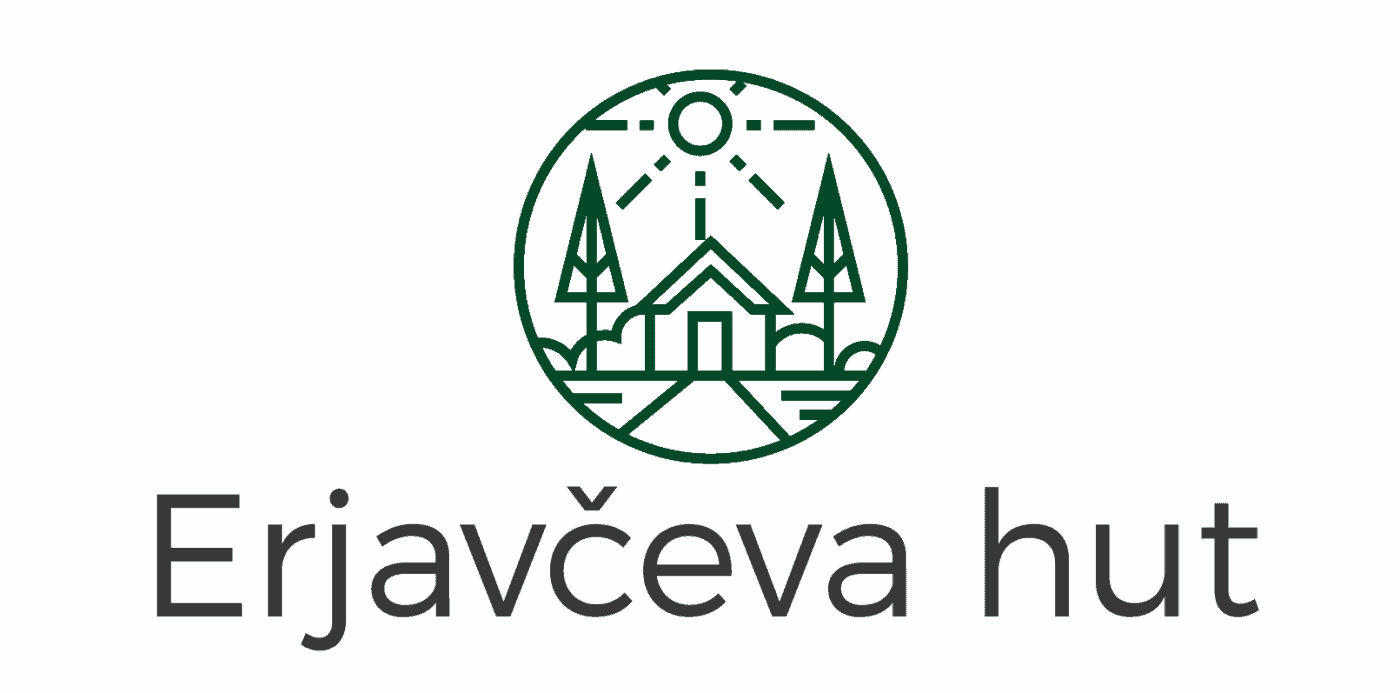

 English
English Deutsch
Deutsch Dutch
Dutch